The benefit of a complete breast imaging workup
A 46-year-old patient presented for a second opinion on a mass found within the right breast on a prior outside mammogram. The patient denies any lumps or pain within either breast.
Clinical History
A 46-year-old patient presented for a second opinion on a mass found within the right breast on a prior outside mammogram. The patient denies any lumps or pain within either breast.
Findings
Mammography reveals an irregular spiculated mass in the right superior breast, measuring 1.6 cm in diameter (Figures 1 and 2).
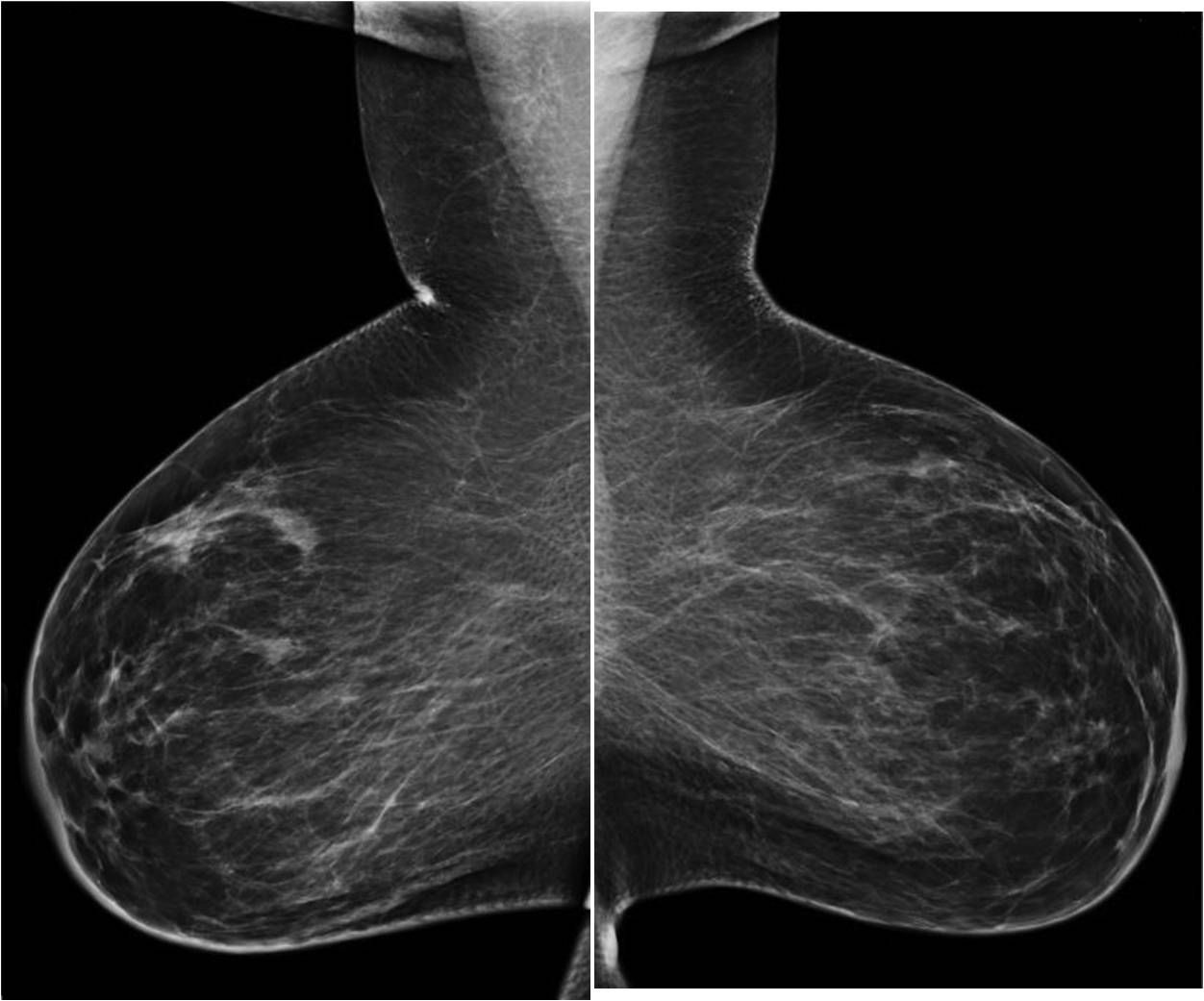
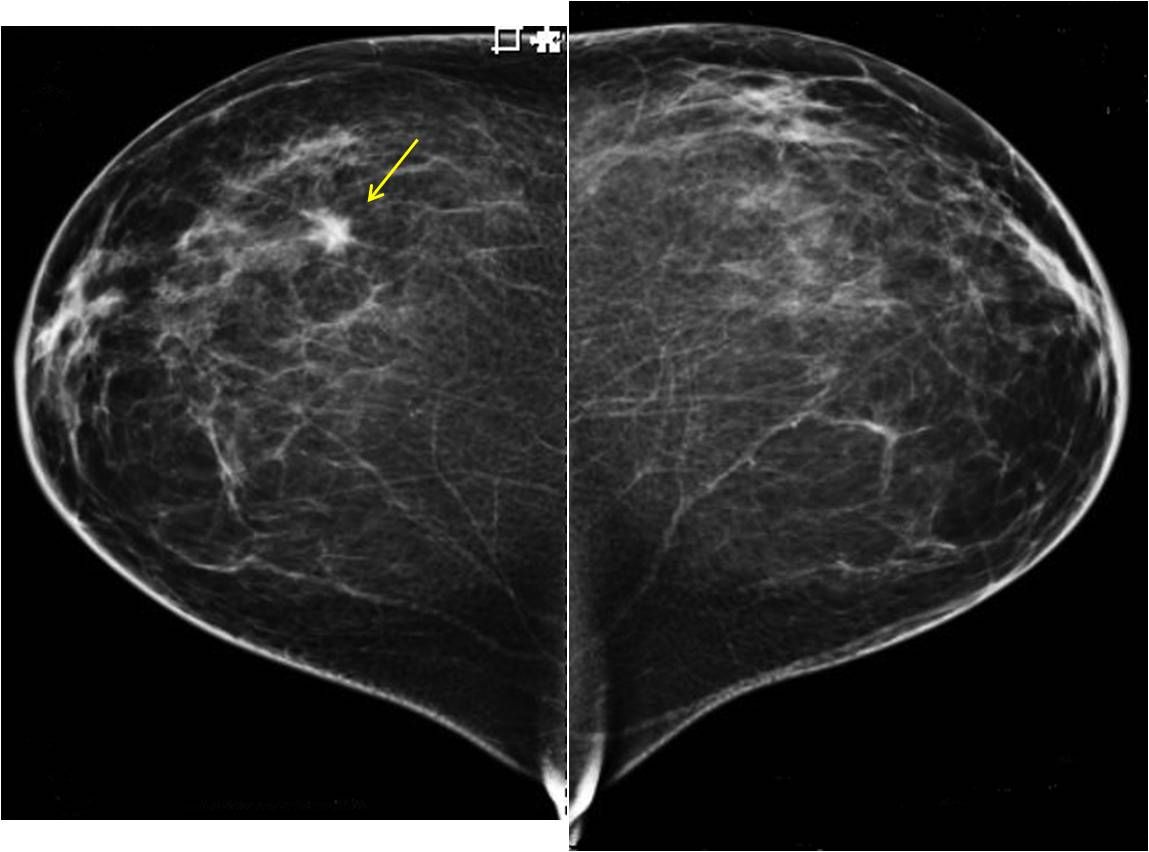
On physical exam, no palpable lump is found. On ultrasound, a hypoechoic mass is present within the right 12:00 area measuring 1.0 x 0.8 cm (Figure 3).
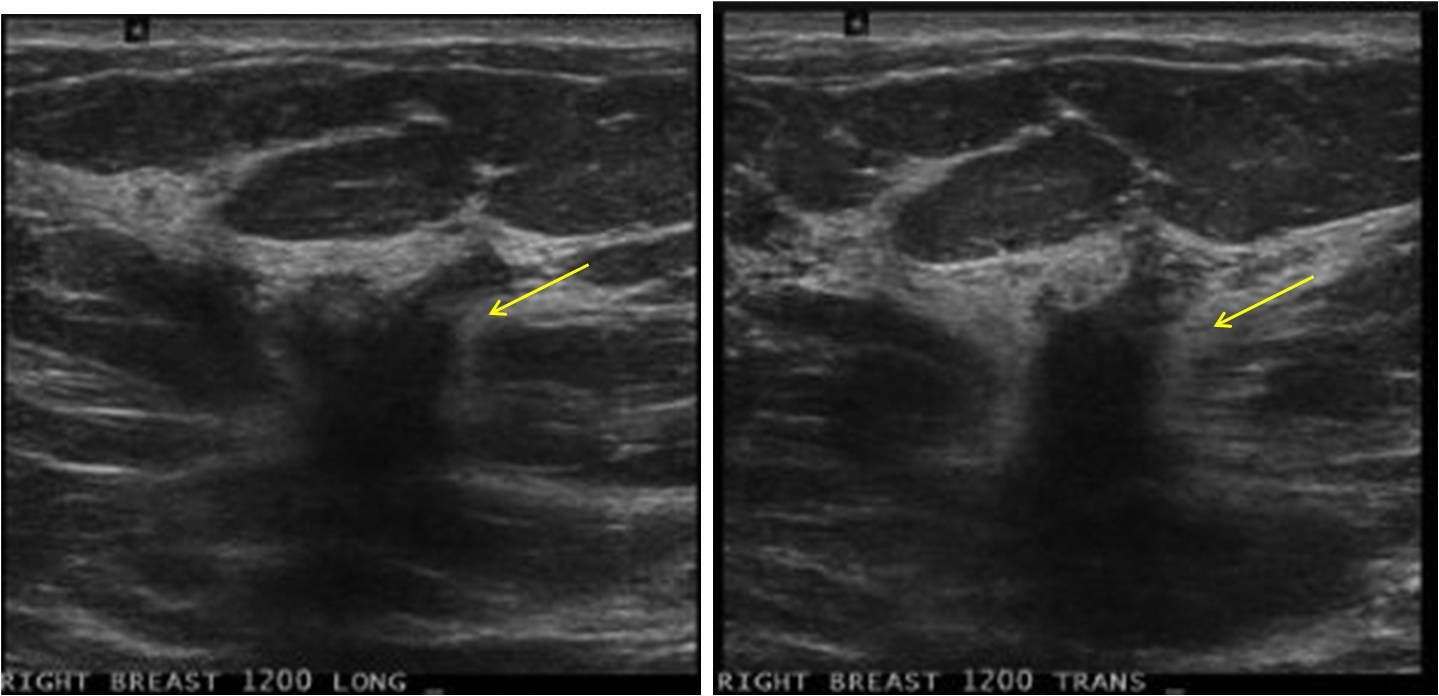
MR imaging performed for extent of disease demonstrates the known carcinoma measuring 1.8 cm in the right breast as well as an additional enhancing mass within the left breast (Figure 4). The patient is recalled for second-look ultrasound as well as possible MRI-guided needle biopsy.
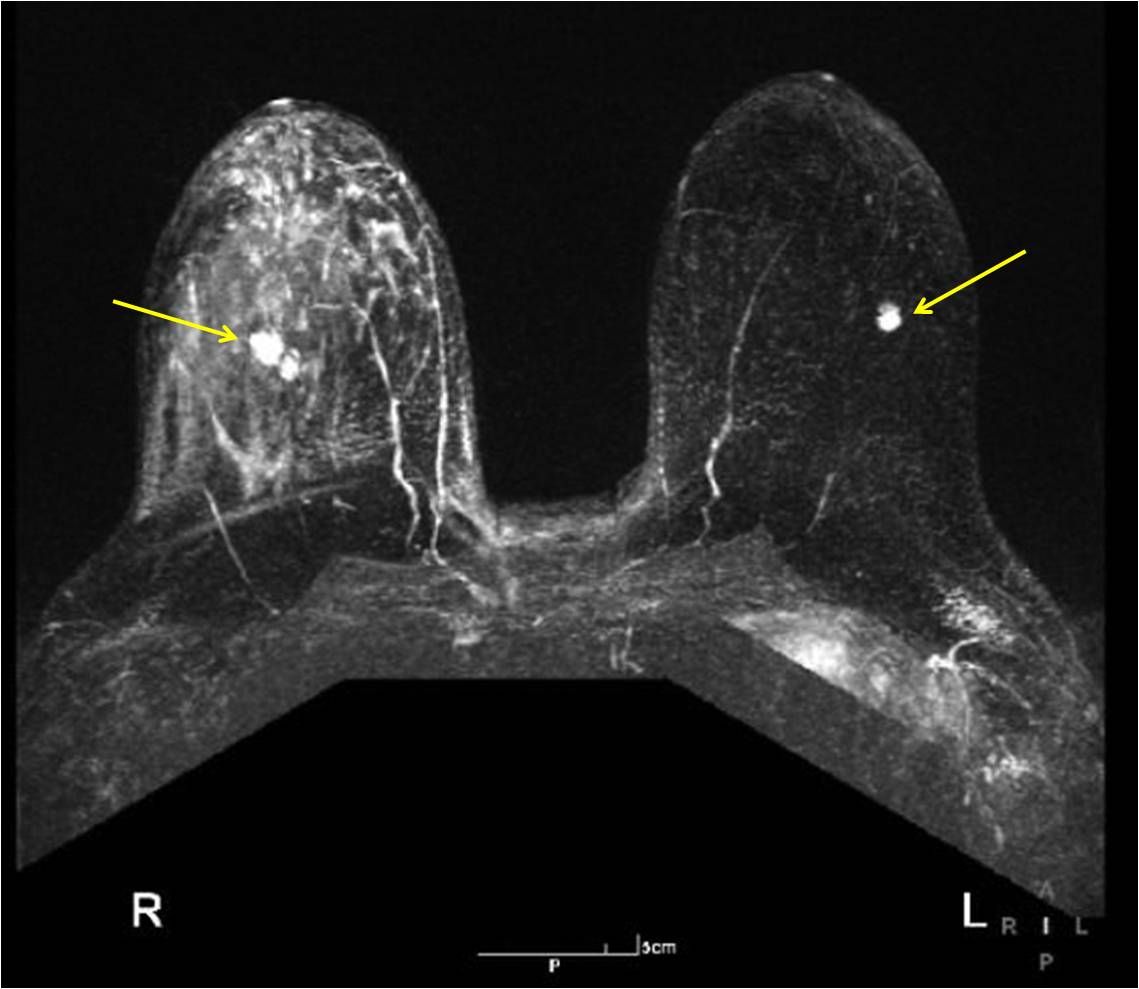
At targeted ultrasound the new mass detected on MRI in the left breast is found to measure 8 mm in diameter (Figure 5). The patient consented to undergo ultrasound-guided needle biopsy.
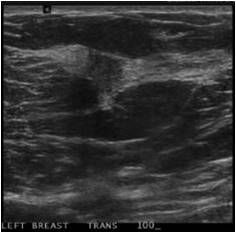
Diagnosis
Vacuum-assisted needle core biopsy of the right breast 12:00 area reveals invasive ductal carcinoma. Ultrasound-guided biopsy of the additional mass in the left breast reveals well-differentiated invasive ductal carcinoma. The patient then proceeded to have bilateral lumpectomies.
Discussion
This case demonstrates the benefit of a complete work-up, including MRI, after diagnosis of breast cancer and the benefit that targeted ultrasound can have in evaluating unsuspected abnormalities found on MRI. The new lesion found on MRI was identified by targeted ultrasound and was therefore able to be biopsied under ultrasound guidance. This is beneficial to both the patient and the facility as the ultrasound procedure is quick and comfortable.
Dr. Destounis is managing partner and a radiologist at Elizabeth Wende Breast Care in Rochester, NY.
The Reading Room Podcast: Current Perspectives on the Updated Appropriate Use Criteria for Brain PET
March 18th 2025In a new podcast, Satoshi Minoshima, M.D., Ph.D., and James Williams, Ph.D., share their insights on the recently updated appropriate use criteria for amyloid PET and tau PET in patients with mild cognitive impairment.
Meta-Analysis Shows Merits of AI with CTA Detection of Coronary Artery Stenosis and Calcified Plaque
April 16th 2025Artificial intelligence demonstrated higher AUC, sensitivity, and specificity than radiologists for detecting coronary artery stenosis > 50 percent on computed tomography angiography (CTA), according to a new 17-study meta-analysis.
New bpMRI Study Suggests AI Offers Comparable Results to Radiologists for PCa Detection
April 15th 2025Demonstrating no significant difference with radiologist detection of clinically significant prostate cancer (csPCa), a biparametric MRI-based AI model provided an 88.4 percent sensitivity rate in a recent study.